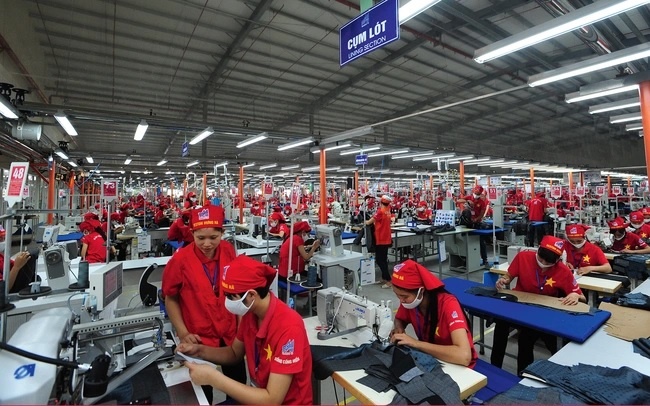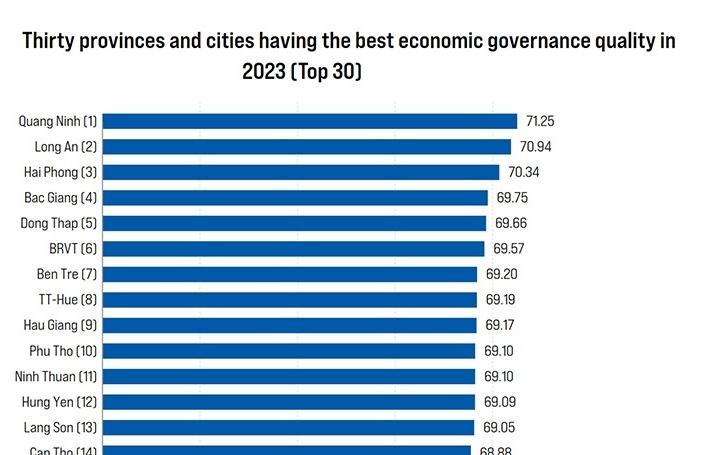Intensive industries eager to narrow recruitment gaps
 |
| Intensive industries eager to narrow recruitment gaps. Source: may10.vn |
Garment 10 JSC requires about 200 employees to take up roles as receptionists, kitchen assistants, and sales staff, but the company has not been able to recruit the necessary number for many months.
“We would pay these employees $300-650 per month, which is a good salary in the textile industry, but we still face difficulty in recruiting,” said Nguyen Viet Hung, the company’s human resources manager.
While using many unskilled workers, many of them are seemingly not very attached to their employers in this industry, which might result from lower salaries.
According to the survey by the Centre of Forecasting Manpower Needs and Labour Market Information, on average, the textile and garment and footwear industries need to recruit 20,000-22,000 new workers each year. However, the demand for jobs in this industry comes from just about 1,000 people.
Meanwhile, Vietnam has recorded a continuous on-year increase in electronics export values, which now account for one-third of the total national export values. As one of the biggest electronics exporters in the world, export values in 2021 climbed up to more than $108 billion.
The electronics sector employs more than one million. However, the industry mainly focuses on low-value-added and labour-intensive outsourcing and assembly activities.
According to data from the General Statistics Office, the number of employees aged 15 and above with jobs in the second quarter increased by 1 per cent compared to the previous quarter, and 1.41 per cent over the same period last year.
Employed labourers in urban areas were 18.7 million people – 127,900 more compared to the previous quarter and 673,700 more compared to the same period last year – and those in the rural areas were 31.9 million people.
The service sector has the most fluctuations in employment due to the strong recovery of the service, accommodation, and catering sectors and the associated opportunities for job seekers. The number of employed workers in the service industry was 19.8 million people, an increase of 429,800 people compared to the previous quarter and 353,800 people over the same period last year.
Although the situation has improved, many businesses are faced with an unresolved labour shortage and are trying to diversify recruitment channels, retain employees, and limit absenteeism.
According to Pham Thi Hoai Linh, who is the human resources director of Navigos Group, businesses should evaluate their managers. Many people choose to quit their jobs because they are tired of the management in the company and more employees are likely to want to stay if they have good management.
“The next step would be to build a corporate culture. In any enterprise, employees also want to be recognised for their efforts in a worthy way,” Linh said. “Therefore, enterprises should appreciate their contributions and encourage them in many ways.”
What the stars mean:
★ Poor ★ ★ Promising ★★★ Good ★★★★ Very good ★★★★★ Exceptional
Related Contents
Latest News
More News
- Precarious figures in business operations (May 09, 2024 | 09:30)
- Global car giants seek tech allies in China's cutthroat EV market (May 08, 2024 | 16:00)
- Samsung to buy French medical AI firm Sonio (May 08, 2024 | 14:37)
- Vietnamese tech unicorns undergo challenging period (May 08, 2024 | 12:37)
- Surging costs and fleet changes drive Vietnam's airfares up in 2024 (May 08, 2024 | 12:11)
- Amazon to invest 9 billion USD in Singapore (May 08, 2024 | 09:49)
- Hanoi welcomes 9,400 new firms in four months (May 08, 2024 | 09:31)
- Optimisation wanted for work hour cuts (May 08, 2024 | 00:20)
- Pathways: the optimal route for senior professionals to become ICAEW chartered accountants (May 07, 2024 | 19:30)
- Calculation of top-up payable under Pillar 2 global minimum tax (May 07, 2024 | 18:00)


 Tag:
Tag:




















 Mobile Version
Mobile Version